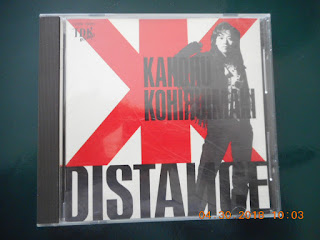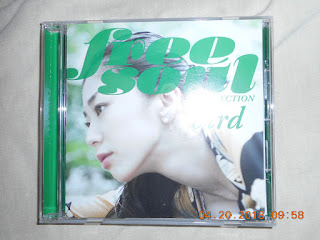It’s
been a while since I last discovered one of these gravure aidoru turned singers
from the early 90s. It’s no mystery that this has always been one of my
favorite Japanese music niches, mostly because of how bad and really “in your
face” it actually is. In fact, most of these artists were not even mainstream
at all, being relegated to some shady variety TV shows that only wanted to show
the girls in bikinis, but whatever. Really, it reminds me of how TV was
decadent in Brazil during the 90s, but no complaining here.
Apparently,
Harumi Inoue (井上晴美) was one member of a Onyanko Club-styled (おニャン子クラブ)
larger group called Sakurakko Club Sakuragumi (桜っ子クラブさくら組). I’ve
read this name a few times, but never listened to the group’s music, which is
fine for me, since I’m not in a hurry to meet all B-rated aidoru groups from Japan’s
past decades. And as I’m talking about B-rated aidoru, just to contextualize, I
discovered Inoue’s songs after searching for some Aya Sugimoto’s (杉本彩)
live performances on YouTube. So, nobody's more suited than the raunchy Sugimoto to pave my way for the awkwardly sexy Inoue.
Harumi
Inoue only released two singles, in May and
October 1991, respectively. The first was “Furimukanaide” (ふりむかないで), one very well known The
Peanuts’ (ザ・ピーナッツ) song
from the 60s, with a cover of Hibari Misora’s (美空ひばり) “Makkana Taiyou” (真赤な太陽) serving as the coupling song. As for the second
single, it’s “Eve no Yuuwaku” (イヴの誘惑), a dance
version of Beethoven’s “Für Elise”, which counted with a cover of Akiko
Nakamura’s (中村晃子) “Nijiiro
no Mizuumi” (虹色の湖) as
the coupling song. In fact, with the obvious exception of Beethoven’s “Für
Elise”, all of Inoue’s songs were covers from 60s hit singles.
Honestly, I don’t really care for “Furimukanaide” at all,
and Inoue’s version does nothing to make the song stand out from the other
million versions out there. Yes, this song is always pleasant, but it was
probably meant to be a cute and safe debut song before launching Inoue’s brief
music career into something sexier and cring… sorry, more interesting.
And with the b-side “Makkana Taiyou” things start
to pick up, since Misora’s 60s hit is turned into a sexy funky house song
with some slicky synths. Also, the clip is a must, since the seductive
Inoue does everything to turn our attention away from the very low budget
video. It’s almost as if we were watching one of those infamous image video, but with actual music (and not just some easy listening melodies) serving
just as background noise. Well, it’s clear how Inoue’s looks were the true intended
product here, but I like the cheesy music as well. I can groove in my chair and tap my feet to it.
Things are not very different in “Eve no Yuuwaku”... but maybe a little worse and less polished (which counts as better and more interesting to me, of
course). If it wasn’t obvious enough how bad of a singer Inoue was (and dancer too, it
that counts), this bizarre dance version of Beethoven’s “Für Elise” is
here to scrub this fact in our faces. It continues in the sexy route and
Beethoven would probably be a little bit upset – to say the least – at how one
of his famous works turned into a piece of regurgitated pop in our times…
or maybe he would be positively hypnotised by Inoue’s captivating persona (really?) and
the strangeness of the whole thing. Who knows, right?
To finish Inoue’s adventure in the music industry
as a solo act, we still have the delicious “Nijiiro no Mizuumi” with its urgent
synth-y arrangement that maybe could pass as a Tetsuya Komuro (小室哲哉) production for Alisa Mizuki (観月ありさ) or Yuki Uchida (内田有紀), or even a Minako Tanaka (田中美奈子) song from her early studio albums. I also like
how Inoue is dressed in this video, just like the almighty Reiko Kato (かとうれいこ) did for her video promotions
one year earlier. The fashion style of those gravure aidoru turned singers was
really something at the time. And the male dancers around Inoue??? Well, I really love how bad they are. Not that I'm a better dancer, but I don't show up on some random aidoru videos. Shame on them, but it's really funny to see.
I can’t tell if I will still be fascinated by
Harumi Inoue’s music in the near future, but I'm still having fun with her cute
crooked smile and cheap early 90s dance-pop tunes. Long live the obscure late
80s/early 90s aidoru!
"Furimukanaide" (left) and "Eve no Yuuwaku" (right)



























